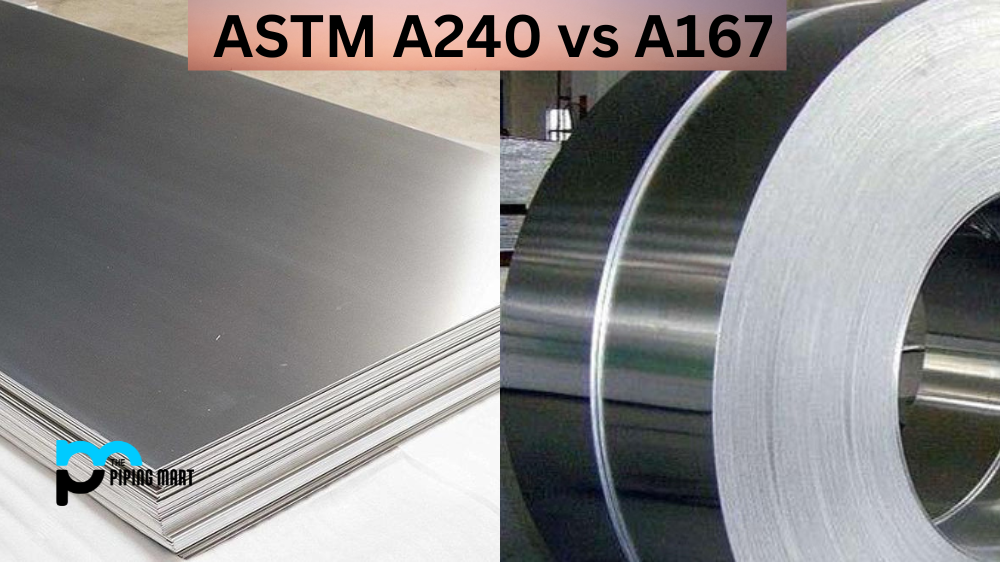When selecting the right material for your project, knowing the differences between various steel grades is important to ensure the perfect fit. Two popular stainless steel grades that often cause confusion among buyers are ASTM A240 and A167. While both are stainless steel grades, some crucial differences affect their suitability for particular applications. This post’ll compare and contrast ASTM A240 vs A167 to help you choose your next project.
Difference Between ASTM A240 and A167
Chemical Composition
The main difference between ASTM A240 and ASTM A167 is the chemical composition. ASTM A240 steel contains chromium, molybdenum, and nickel, while ASTM A167 only contains chromium and molybdenum. This means that ASTM A240 steel will resist corrosion better than ASTM A167.
Tensile Strength
Another difference between ASTM A240 and ASTM A167 is the tensile strength. ASTM A240 steel has a higher tensile strength than ASTM A167. This means that it will be more resistant to breaking under stress.
Yield Strength
ASTM A240 also has a higher yield strength than ASTM A167. This means that it can withstand more force before deforming.
Ductility
ASTM A240 is more ductile than ASTM A167. This means that it can be formed into shapes more easily. It will also be less likely to crack when bent or stretched.
Hardness
ASTM A240 is harder than ASTM A167. This means that it will resist wear and tear better.
Conclusion
ASTM A240 and A167 are two standards for the specification of stainless steel plates. The main differences between them lie in their mechanical properties, chemical composition, formability, and fabrication. ASTM A240 requires higher chromium content than A167 does, with values ranging from 17% to 20%. In terms of formability, A240 has superior tensile strength compared to A167. In regard to fabrication however, ASTM A167 is easier as it has tighter tolerances on plate thickness. As a conclusion; ASTM A240 provides more versatile mechanical properties while ASTM A167 offers better formability through tighter gauge tolerance limits.

Pipingmart is a B2B portal that specializes in metal, industrial and piping items. Additionally, we share the latest information and information about materials, products and various types of grades to assist businesses that are involved in this business.




